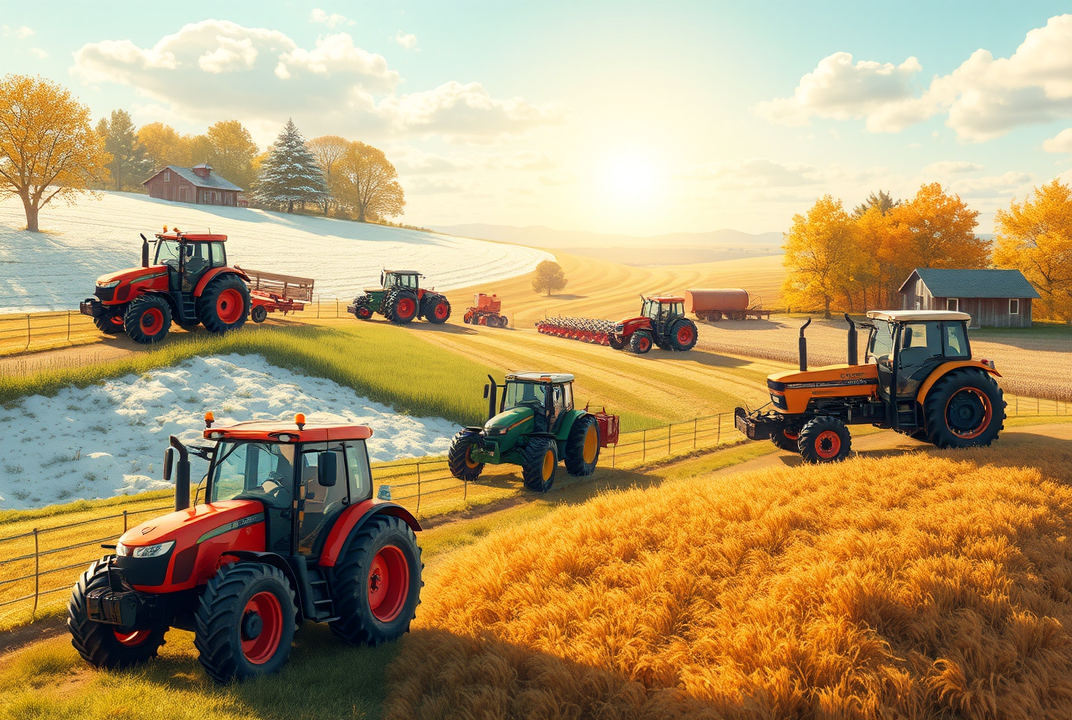Effective Strategies to Adapt Farm Equipment for Every Season

Introduction
Have you ever wondered how altering farm equipment according to the season can dramatically influence productivity? Ensuring that your farming tools are optimized for different times of the year is crucial for maximizing output and reducing wear and tear.
In this guide, we'll explore the essential tactics for adapting your farm equipment per season. You'll learn about seasonal adjustments, crucial maintenance tips, and innovative techniques to ensure your machinery meets your farming needs all year.
Understanding Seasonal Differences
First things first, let's identify why seasonal adaptation matters. Each season presents unique challenges and opportunities for farmers. From icy winters to blistering summers, your equipment must weather the elements to keep running efficiently.
Winter Preparation
Key Challenges:
-
Cold temperatures can cause machinery to become brittle or seize up.
-
Soil conditions differ, often making plowing challenging.
Solutions:
-
Perform comprehensive inspections for wear and tear.
Use antifreeze in engines to prevent freezing.
-
Consider machinery covers to protect against snow buildup.
-
Switch to winter-appropriate lubricants that function under cold temperatures.
Spring Revival
Key Challenges:
-
Moist soil can lead to machinery getting bogged down.
-
Plants require precise planting depths and spacing for optimal growth.
Solutions:
-
Calibrate seeding equipment to match specific plant crops.
Inspect and replace worn-out planter parts.
-
Ensure proper tire pressure to navigate muddy fields.
-
Utilize GPS technology to ensure precision in planting.
Summer Adjustments
Summers can be scorchingly hot but are critical for most crop growth. Adaptation during this season mostly revolves around combating heat and ensuring effective irrigation.
Key Challenges:
Overheating of engines.
-
High dust conditions affecting machinery performance.
Solutions:
Regularly check and clean air filters.
-
Ensure cooling systems are functioning at peak efficiency.
-
Monitor irrigation equipment for uniform water distribution.
-
Switch from standard to heat-resistant lubricant oils.
Autumn Harvesting
Autumn is a busy time, so your equipment must be in top form to handle the heavy workload of harvesting.
Key Challenges:
Machinery wear due to constant usage.
-
Harvesting equipment needs precision in cutting and storing crops.
Solutions:
Regular sharpening and cleaning of blades.
-
Inspection of belts and hydraulic systems for any sign of fatigue.
-
Use high-capacity storage to minimize time spent unloading.
-
Perform end-of-season maintenance checks and replace worn parts.
General Equipment Maintenance
Maintenance isn't just seasonal; a year-round strategy is critical. Keep detailed records of service dates, parts replaced, and any anomalies noticed during equipment operation.
Monthly Inspections
Check fluid levels, including oils and coolants.
Verify tire conditions and pressures.
Inspect safety features like brakes and signals.
Seasonal Tune-Ups
Perform thorough checks at the end of each season, focusing on components affected by the specific conditions of the time.
Innovative Technologies
Agricultural technology advancements mean upgrading equipment isn't always physical. Software updates or GPS integration can improve navigation and efficiency.
Example: Implementing drones to survey fields for more efficient planning and equipment usage.
Conclusion
Farming is both methodical and adaptive. By tuning your equipment with the seasons, you not only protect your investments but also enhance productivity. Maintain comprehensive records, invest in seasonal adaptations, and consider technological solutions to stay a step ahead.
Next Steps: Re-evaluate your farm's current equipment status and plan for necessary adaptations before the next season arrives.